Common names: Douglas fir, Douglas-fir, Oregon pine, Columbian pine
Scientific name: Pseudotsuga menziesii
Family: Pinaceae
Origin: non-native
A fragrant home for wildlife, the Douglas fir isn’t just for Christmas. First introduced in the 1800s, it’s been a valuable timber source and provided homes for the likes of red squirrels and pine martens.
Common names: Douglas fir, Douglas-fir, Oregon pine, Columbian pine
Scientific name: Pseudotsuga menziesii
Family: Pinaceae
Origin: non-native
Douglas fir is an evergreen conifer that can grow to 55m and live for more than 1,000 years. The bark of young trees is grey-green with highly scented blisters, and becomes purple-brown, thick and corky with horizontal fissures over time.
Look out for: the trunk which has resin-filled blisters, and the scales on cones which have three pointed tips. When crushed, the leaves have a sweet resin smell.
Identified in winter by: its evergreen features which are present year-round.
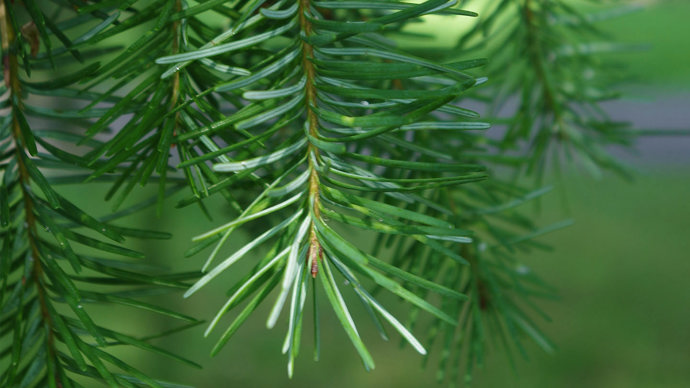
Credit: Glyn Baker / WTML
Needle-like leaves are flat, soft and flexible, and distributed around the twig. They are green in colour with white-green stripes on the underside. Buds resemble those of beech trees – they are red-brown, scaly and slender, and taper to a point.
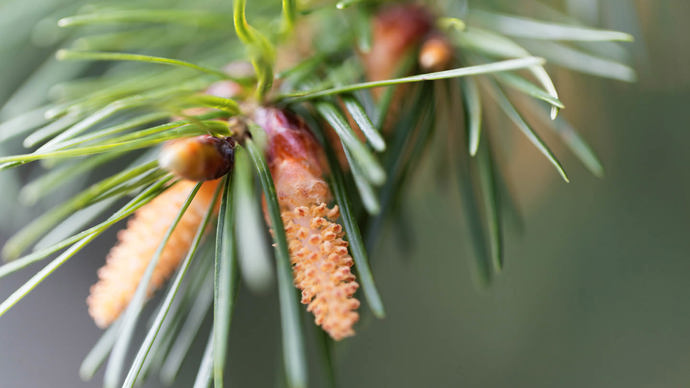
Credit: iStockPhoto.com / weisschr
Douglas fir is monoecious, meaning both male and female cones are found on the same tree. Male cones are oval, in clusters and bear yellow stamens growing on the underside of the previous year's shoots. Female cones are green to red, upright tufts, and grow at the tips of twigs.
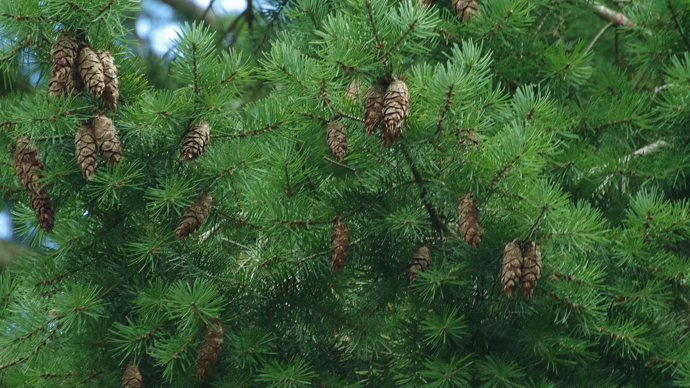
Credit: Glyn Baker / WTML
After pollination by wind, the seeds develop in the female cones. They hang straight down from the branches and change in colour from yellow to pink to light brown. From each scale protrudes a unique three-pointed bract.
Other planted fir trees.
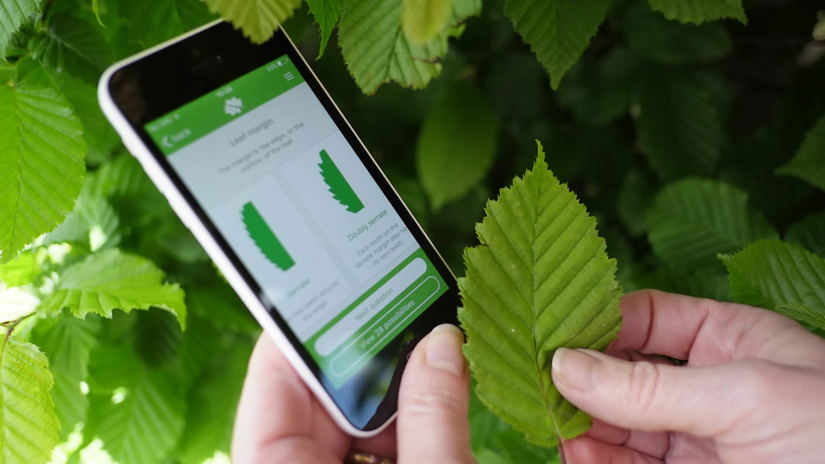
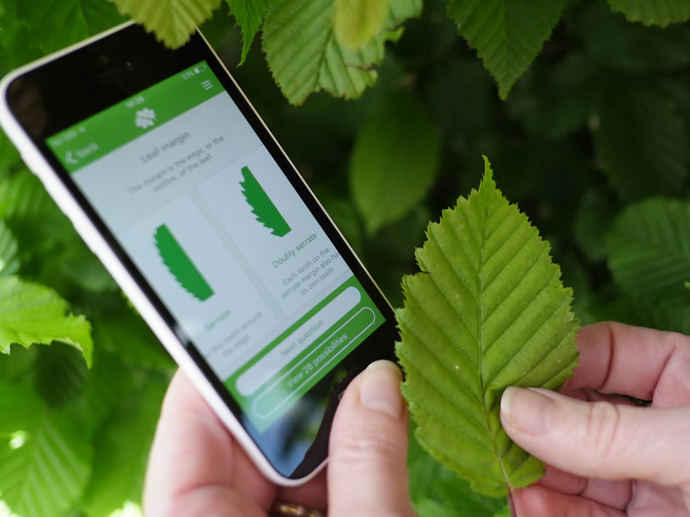
Download our free Tree ID app for Android and iPhone to identify the UK's native and non-native trees. It's an A-Z tree guide in your pocket.
Douglas fir is native to North America but was brought to the UK in 1827 by botanist David Douglas and it can now be found in a variety of habitats, including open forests with plenty of moss and rainy conditions. It thrives in western areas of the UK, where rainfall is higher.
Douglas fir bark is non-flammable. This protects the tree from fires in its native range.
Because the trees are so long-lived, they provide deadwood cavities which birds and bats shelter in. Being tall, they also make perfect nesting sites for larger birds of prey, such as buzzards, sparrowhawks and hobbies.
The spruce carpet and dwarf pug moths feed on the needles, while the seeds are eaten by finches and small mammals. In Scotland, Douglas fir forests provide habitats for the red squirrel and pine marten.
A Native American myth describes the unusual pointed cone bracts as the tail and hind legs of mice. It was said the mice hid in the cones to escape forest fires.
Douglas fir timber is of great commercial importance, and is used to make beams, veneers, furniture, cladding, decking and flooring.
Douglas fir trees are widely grown for Christmas trees.
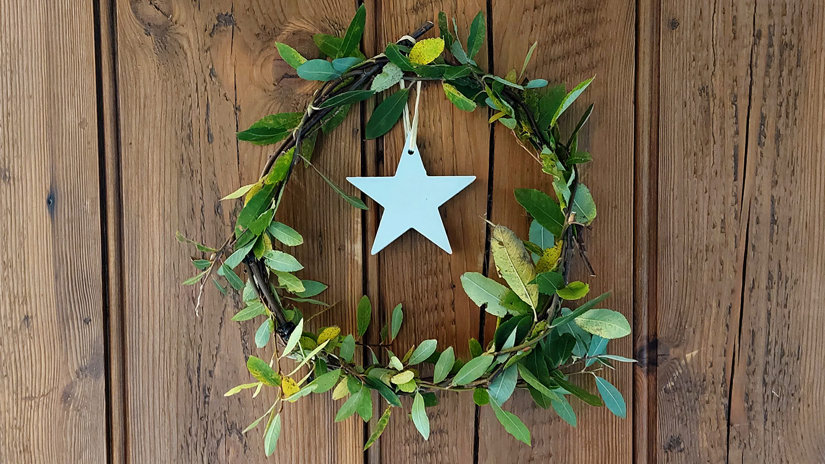
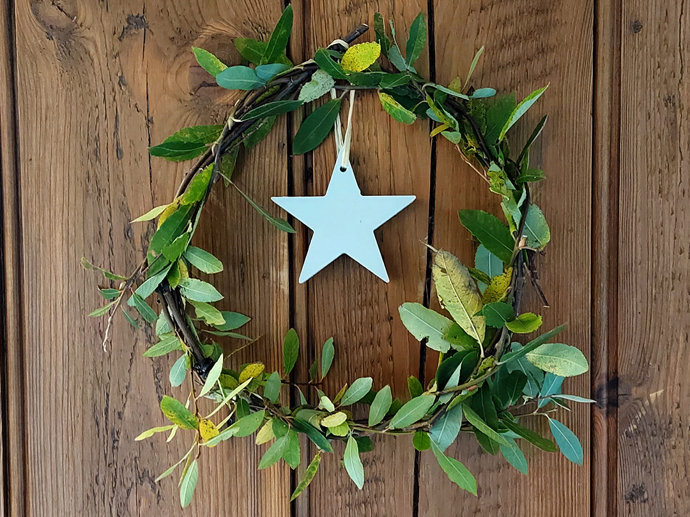
Helen Keating • 05 Dec 2022
Transform your home into a woodland wonderland this Christmas with our easy ideas for festive, foraged home decor.
Douglas fir can be vulnerable to infection by various fungal diseases.